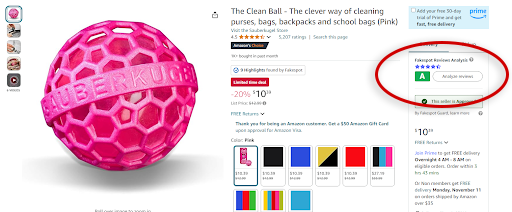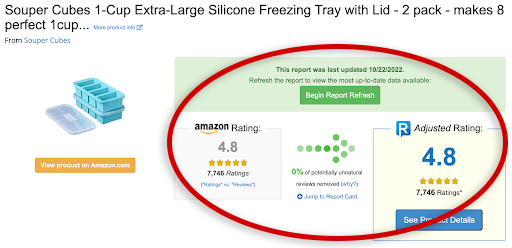How to spot fake reviews on Amazon and other sites online

With the holidays around the corner, I’m gearing up for a whole lot of online shopping between now and Christmas. And while I’m glad the FTC is finally cracking down on fake and paid reviews, let’s be real — it’s not going to catch every bogus review out there.
So, here’s my go-to guide for spotting fake reviews and finding the real deal before you hit “Buy Now.”
Step 1: Use a site that does it for you
Fakespot vets reviews on Amazon, Walmart, eBay and lots of other sites and shows you how they score. I love that it gives you a letter rating. Anything graded C or below screams “Walk away!” to me. The best part? Fakespot’s free.


There’s another site like Fakespot called ReviewMeta. Instead of a letter grade, ReviewMeta shows an adjusted rating for the product, removing what it considers to be fake reviews.

You can use it for free by simply pasting the Amazon URL into ReviewMeta’s website or installing their browser extension.
(Btw, I love those Souper Cubes! They make a great gift, too.)
Step 2: Use your noggin
Fakespot and ReviewMeta aren’t foolproof. The AI they use is getting smarter, but so is the AI churning out sham reviews. Here are some tricks to try:
- Look at the dates: Fake reviews normally drop in waves. A bunch of positive reviews left in one day is a big red flag.
- Check the reviewers’ profiles: On platforms like Amazon, you can click on a reviewer’s name to see their profile. If they’ve reviewed tons of similar products or a lot of items within a short time frame, it’s a sign they might be part of a paid review network.
- Filter by verified purchases: Amazon and some other sites label reviews from customers who actually bought the item as a “Verified Purchase.” Fake reviews often aren’t verified since the “reviewers” aren’t really purchasing the product.
- Look at the rating distribution: Genuine products often have a mix of ratings (four and five stars, with some three-star reviews or lower). If you see a product with mostly five-star ratings and very few critical ones, the positive reviews were probably bought.
- Turn on your AV: Antivirus doesn’t find fake reviews, but it does help protect you from scammy retail sites. Here’s my pick.
Spot a fake review online?
Do your part and report it to the FTC at reportfraud.ftc.gov. Sham testimonials, AI-generated comments, bots inflating follower counts — anything sketchy. The FTC’s penalty? Up to $51,744 per violation.
😶🌫️ I saw a review of a phone charger that said, “It changed my life!” I thought, “Really, a phone charger changed your life. You seriously need to get out more.”
We may earn a commission from purchases, but our recommendations are always objective.
Tags: deals, fakes, Fakespot, FTC, ReviewMeta, reviews, shopping
